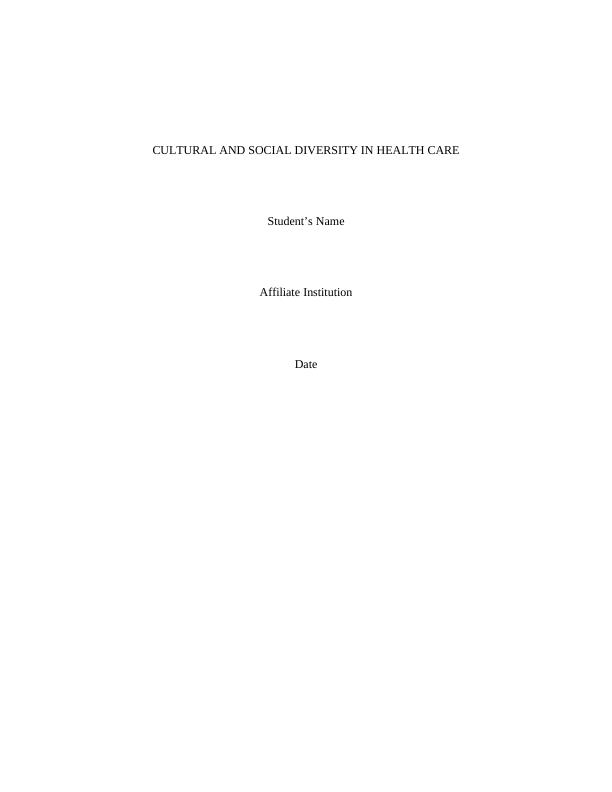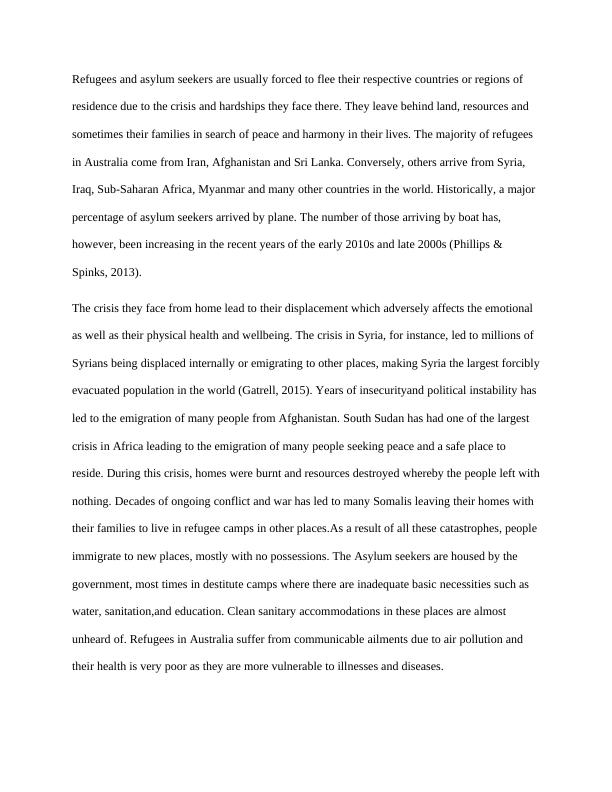Cultural and Social Diversity in Health Care
9 Pages2266 Words377 Views
Added on 2023-06-04
About This Document
The essay discusses the impact of cultural practices on the health of Aboriginal and Torres Strait Islander people and Australian refugees. It highlights the risk factors affecting their health and the policies set aside to improve their health outcomes.
Cultural and Social Diversity in Health Care
Added on 2023-06-04
ShareRelated Documents
End of preview
Want to access all the pages? Upload your documents or become a member.
Cultural and Social Diversity: Impacts on Health of Aboriginal and Amish Groups in Australia
|11
|2708
|193
Exploring Sustainability: The Health and Livelihoods of Asylum Seekers
|9
|2046
|49
Cultural and Social Diversity in Health Care
|13
|3176
|102
Mental Health MENTAL HEALTH1 MENTAL HEALTH2 Mental Health Student’s name Institutional Affiliation Mental Health Introduction Australia High Commission for Refugees
|14
|3690
|356
Diabetes Incidence among the Australian Indigenous Population
|10
|2433
|182
Social Workers and Community Welfare Workers Making a Difference
|7
|2142
|126



